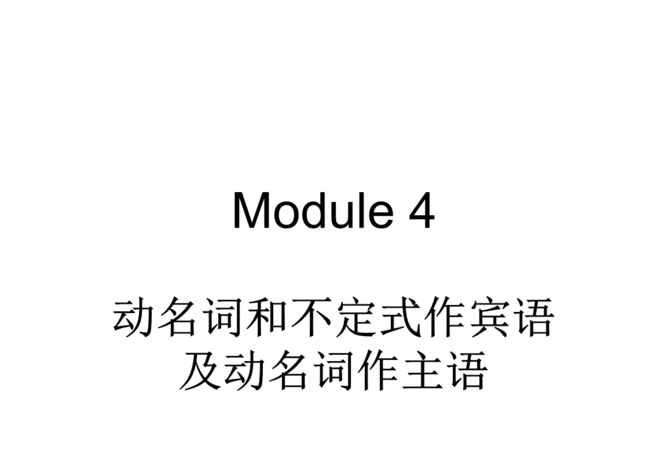本文目录
英语中动名词做主语的用法
doing作非谓语有两种情况,要么是现在分词,要么是动名词
做主语和宾语(也包括介词后的宾语)的话,肯定是动名词
作状语,定语的肯定是现在分词
作表语可以是现在分词也可以是动名词

动名词的用法
[编辑本段]动名词的作用 动名词具有名词的性质,因此在句中可以作主语、表语、宾语、定语等. 作主语 Reading is an art. 读书是一种艺术. Climbing mountains is really fun. 爬山真是有趣 Working in these conditions is not a pleasure but a suffer. 在这种工作条件下工作不是一件愉快的事而是一件痛苦的事. 动名词作主语,在动词的基础上加Ing,是该动词或动词短语,有名词的各种特征,可作名词灵活使用.如: It is no use/no good crying over spilt milk. 覆水难收 It is a waste of time persuading such a person to join us. 劝说这样的人加入真是浪费时间. It was hard getting on the crowded street car. 上这种拥挤的车真难. It is fun playing with children. 和孩子们一起玩真好. There is no joking about such matters. 对这种事情不是开玩笑. 动名词作主语的几种类型 动名词可以在句子中充当名词所能充当的多种句子成分.在这里仅就动名词在句子中作主语的情况进行讨论. 动名词作主语有如下几种常见情况: 1. 直接位于句首做主语.例如: Swimming is a good sport in summer. 2. 用 it 作形式主语,把动名词(真实主语)置于句尾作后置主语. 动名词做主语时,不太常用 it 作先行主语,多见于某些形容词及名词之后.例如: It is no use telling him not to worry. 常见的能用于这种结构的形容词还有:better,wonderful,enjoyable,interesting,foolish,difficult,useless,senseless,worthwhile,等. 注意:important,essential,necessary 等形容词不能用于上述结构. 3. 用于“There be”结构中.例如: There is no saying when he'll come.很难说他何时回来. 4. 用于布告形式的省略结构中.例如: No smoking ( =No smoking is allowed (here) ). (禁止吸烟) No parking. (禁止停车) 5. 动名词的复合结构作主语 当动名词有自己的逻辑主语时,常可以在前面加上一个名词或代词的所有格,构成动名词的复合结构(——这时,名词或代词的所有格做动名词的逻辑主语).动名词的复合结构也可以在句中作主语.例如: Their coming to help was a great encouragement to us. 6.例词 shopping fishing cycling这些都是很常见的动名词 二、动名词作主语与动词不定式作主语的比较 动词不定式和动名词都可以用作主语.在意义上相近.但动名词多用来表示泛指或抽象动作,不定式多用来表示特指或具体动作.比较: Smoking is not good for health. It is not good for you to smoke so much. 注意: 1)在口语中,用动名词作主语位于句首的较不定式多见. 2)在“It is no use...”,“It is no good...”,“It is fun...”,“It is a waste of time...”等句型中,通常用动名词作真实主语: It is no use/good/a waste of time talking about that. *It is no use/good/a waste of time to talk about that. 3)在疑问句中,通常用动名词的复合结构,而不用不定式的复合结构作主语: Does your saying that mean anything to him? *Does for you to say that mean anything to him? 4)在“There be”句型中,只能用动名词,而不能用不定式作主语: There is no telling what will happen. It is impossible to tell what will happen. 5)当句子中的主语和表语都是非限定动词时,要遵循前后一致的原则,主语和表语在形式上要求统一: Seeing is believing. *To see is to believe. 作宾语 (1)作动词的宾语 某些动词后出现非限定性动词时只能用动名词作宾语,不能用不定式.常见的此类动词有:advise, allow, permit, avoid, consider, enjoy, finish, give up, cannot help, imagine, include, keep, keep on, mind, miss, put off, delay, practise, resist, suggest, depend on, think about, set about, succeed in, worry about, burst out, insist on, can’t stand, be used to, get used to, devote…to…, look forward to, pay attention to, get down to,escape 等.如: They went on walking and never stopped talking. 他们继续走,说个不停. I found it pleasant walking along the seashore. 在海滩上走真是乐事. Mark often attempts to escape being fined whenever he breaks traffic regulations. 每当马克违反交通规则时,他常常企图逃避罚款的处分. (2)作介词的宾语 We are thinking of making a new plan for the next term. 我们正考虑为下学期制定新的计划. Shall we have a rest or get down to doing our work? 我们休息呢还是开始干活? (3)作形容词的宾语 The music is well worth listening to more than once. 这种曲子很值得多听几遍. We are busy preparing for the coming sports meet. 我们正为马上到来的运动会忙着做准备. 作表语 动名词作表语时句子主语常是表示无生命的事物的名词或what引导的名词性从句.表语动名词与主语通常是对等的关系,表示主语的内容,主语、表语可互换位置. Your task is cleaning the windows. 你的任务就是擦窗户.(Cleaning the windows is your task.) What I hate most is being laughed at. 我最痛恨的就是被别人嘲笑. (Being laughed at is what I hate most.) 作定语 动名词作定语往往表示被修饰词的某种用途.如: a walking stick =a stick for walking=a stick which is used for walking a washing machine=a machine for washing=a machine which is used for washing a reading room=a room for reading=a room which is used for reading a measuring tape=a tape for measuring=a tape which is used for measuring sleeping pills=pills for sleeping=pills which is used for sleeping [编辑本段]动名词的逻辑主语 带有逻辑主语的动名词称为动名词的复合结构.当动名词的逻辑主语与句子的主语不一致时,要在动名词之前加上物主代词或名词所有格,这便构成了动名词的复合结构.其中物主代词(名词所有格)是逻辑上的主语,动名词是逻辑上的谓语.动名词复合结构在句中可作主语、宾语、表语等,分别相当于一个主语从句、宾语从句、表语从句.如: Her coming to help encouraged all of us. 他来帮忙鼓舞了我们所有人. (=That she came to help encouraged all of us.) Jane’s being careless caused so much trouble. 简的粗心惹来了不少麻烦. (=That Jane was careless caused so much trouble.) What’s troubling them is their not having enough food. 烦扰他们的是食物不足. (=What’s troubling them is that they have not enough food.) 在口语中,如果动名词复合结构作宾语,其中的物主代词常用人称代词宾格,名词所有格常用名词普通格来代替,但在句首作主语时不能这样来代替.如: Would you mind my/me using your computer? 用下你的电脑介意吗? The father insisted on his son’s/his son going to college. 爸爸坚决要求儿子上大学. Mary’s (不可用Mary) being ill made her mother upset. 玛丽病了,使她妈妈很着急. His (不可用Him)smoking made his family angry. 他抽烟使他一家人非常生气. 在下列情况下动名词的逻辑主语必须用名词的普通格或人称代词宾语: a.无命名词 The baby was made awake by the door suddenly shutting. 这个婴儿被猛烈的关门声吵醒. b. 有生命名词但表示泛指意义 Have you ever heard of women practising boxing? 你听说过妇女练拳击吗? c. 两个以上的有生命名词并列 Do you remember your parents and me telling about this? 你记得你父母和我都告诉过你这事吗? [编辑本段]动名词的时态和语态 动名词的时态和语态如下: 时态 主动语态 被动语态 一般式 writing being written 完成式 having written having been written 其否定形式是在doing前加上not 1、动名词一般式表示的动作通常是一般性动作,即不是明确地发生在过去、现在或将来的动作,或是与谓语动词所表示的动作同时发生的动作.如: I hate talking with such people. 我讨厌与这样的人说话. Being careless is not a good habit. 粗心不是一个好习惯. 2、动名词的完成式表示的动作发生在谓语动词动作之前.如: I don’t remember having met him before. 我记不得以前见过他. Thank you for having taking so much trouble to help. 谢谢你费力帮忙. 3、动名词的逻辑主语同时也是动名词动作的承受者,动名词用被动语态. (1)它的一般式表示的动作与谓语动词动作同时发生,或在其前发生.如: I don’t like being laughed at in public. 在公共场合下,我不喜欢被别人嘲笑. (2)它的完成式表示的动作发生在谓语动词之前.如: I am very pleased at your having been honoured with a medal. 我很高兴你能获得这样的奖牌. (3)在某些动词,我们常用动名词的一般式表示完成式,尽管动作发生在谓语动词动作之前,这似乎是一种强大的习惯.如: Excuse me for being late. 我来晚了请你原谅. I don’t remember ever meeting somewhere. 我记不得原来在什么地方见过. Thank you for giving us so much help. 谢谢给我们这么大的帮助. (4)在多数情况下都避免使用动名词被动语态完成式,而用一般式代替,以免句子显得累赘,尤其是在口语中.如: I forget once being taken (having been taken ) to the city zoo. 我曾被带到过这个动物园,可我忘了. (5)动名词被动语态一般式与现在分词被动语态一般式同形,但无进行意义,being不可省略.如: She is afraid of being taken to the public. 她怕被领到大众面前. [编辑本段]常见题型 1) 动名词做主语时,谓语动词为单数 2) 在动名词和不定式中,作为介词的宾语是动名词 3) 动名词的否定直接在其前加否定词,通过代词的宾格或所有格形式给出逻辑主语 例: I would appreciate_______ back this afternoon. A.you to call B.you call C.you calling D.you’re calling(Key:C;换成your calling也对) 4) 有些词后只能接动名词 admit; appreciate; avoid; celebrate; consider; contemplate; defer; delay; deny; detest; discontinue; dislike; dispute; enjoy; it entails; escape; excuse; explain; fancy; feel like; finish; forgive; can’t help; hinder; imagine; it involves; keep; it means; mention; mind; miss; it necessitates; pardon; postpone; practice; prevent; recall; report; resent; resist; risk; suggest; understand... 5) 另外还有一些接-ing形式的常用说法 it’s no good; it’s no/little/hardly any/ use; it’s not/hardly/scarcely use; it’s worthwhile; spend money/time; there’s no; there’s no point in; there’s nothing worse than; what’s the use/point... 6) 有些词后面加不定式和动名词均可 remember, forget, try, stop, go on, cease, mean后面均可用不定式和-ing形式,但意义截然不容. 例: remember to do/doing: ①I remembered to post the letters.(指未来/过去未来将要做的动作) ②I remembered posting/having posted the letters.(我记得做过这个动作) forget与remember的用法类似. regret的用法: ①I regret to inform you that…(我很遗憾地通知你……) ②I regretted having left the firm after twenty years.(为了“二十年前的离开”而遗憾.) try to(努力)与try +–ing(试验): ①You really must try to overcome your shyness. ②Try practicing five hours a day. [编辑本段]动名词与现在分词的同与不同 动名词它在形式上与现在分词相同,都是在动词原形的词末加-ing.在现代语法中,这两种形式同视为"-ing形式". 这两种形式的另一个相同之处是:它们都是由动词变化而成的,它们都保留了动词的某些特征,它们都能带自己的宾语、状语,而构成动名词短语或是现在分词短语去担当句子成分.例如: Speaking in the public , he will surely be very cheerful . (现在分词短语,作状语)他在公众场所讲话时总是兴高采烈的. She hates speaking in the public. (动名词短语,作宾语)她不喜欢在公众场所讲话. 区别: 1?动名词和现在分词都可以用于系动词之后作表语,区别方法是: ①作表语的动名词与主语指的是同一件事,此时系动词相当于“是”,通常把主语和表语的位置互换,语法和意思不变,例如: My hobby is swimming.可改为Swimming is my hobby.(可将原句中的主语与表语位置互换) ②现在分词作表语主要用以说明主语的性质,不能与主语互换位置,例如: The story is interesting .不可改为:Interesting is the story. 2?动名词和现在分词都可以用作定语来修饰名词,两者的区别在于: 动名词修饰名词时主要表示该名词的用途,而现在分词修饰名词时性质?状态或动作等?试比较: ①a swimming boy和a swimming suit 前者的意思是“一个正在游泳的男孩”,即a boy who is swimming ,现在分词swimming 表示被修饰名词boy的动作;而后者的意思是“游泳衣”,即a suit for swimming , 动名词swimming表示suit 的用途? ②a sleeping child 和 a sleeping car 前者的意思是“一个正在睡觉的孩子”,即a child who is sleeping ,现在分词sleeping 表示被修饰名词 child 正处于的状态;而后者的意思是“卧车(被用来睡觉的车厢)”,即 a car which is used for sleeping ,动名词 sleeping 表示car 的用途?

什么时候用动名词作主语什么时候用不定式作主语
主要在下面五种情况下用动名词作主语:
1)直接位于句首做主语:
Swimming is a good sport in summer.
2)it 作形式主语时把动名词(真实主语)置于句尾作后置主语.动名词做主语时,不太常用 it 作先行主语,多见于某些形容词及名词之后:
It is no use telling him not to worry.
常见的用于这种结构的形容词还有:better,wonderful,enjoyable,interesting,foolish,difficult,useless,senseless,worthwhile等.
注:important,essential,necessary 等形容词不能用于这种结构.
3)There be结构中:
There is no saying when he'll come.
很难说他什么时候回来.
4)用于布告形式的省略结构中:
No smoking =No smoking is allowed (here) .
5)动名词的复合结构作主语,当动名词有自己的逻辑主语时,常在前面加上一个名词或代词的所有格,构成动名词的复合结构(这时名词或代词的所有格做动名词的逻辑主语).动名词的复合结构也可以在句中作主语:
Their coming to help was a great encouragement to us.
他们来帮助我们对我们是个极大的鼓舞.

两个并列的动名词作主语,谓语动词用单数还是复数
两个以上的动名词作主语时,谓语有:
1.单数:如果两个动名词指一件事:
如:
Going
to
bed
early
and
getting
up
early
is
good
.
2复数,两件事:
Drawing
and
playing
are
my
hobbies.

以上就是关于几个动名词做主语的用法 ,英语中动名词做主语的用法的全部内容,以及几个动名词做主语的用法 的相关内容,希望能够帮到您。
